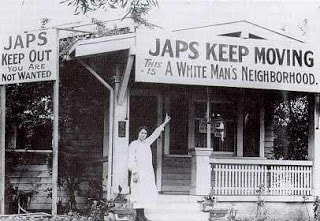|
Recently, a New Zealand film crew came to our house to shoot a documentary. While they were setting up, one of the producers began asking about the divisive mood here in America and how he was really surprised to see a truck proudly streaming a confederate flag from the back of its cab as it sped past them on Route 8 near our house in Massachusetts. While it’s still rare, one thing is clear: the confederate flag is not just a “southern” thing anymore. The following two articles talk about confederate flags on display in northern states: Some White Northerners Want to Redefine a Flag Rooted in Racism as a Symbol of Patriotism Confederate Flag at Great Barrington School Prompts Free Speech, Student Privacy Debate The first one basically says that some white northerners are adopting the confederate flag, with its white nationalist roots, as a symbol of white collective grievances and rebellion. The latter talks about a student at a local high school in the Berkshires who wore a confederate flag to school. The ACLU of Western Massachusetts defended his right to do so in the name of free speech. My Freedom from Fear/Yellow Bowl Project also speaks to issues of freedom—or what had been the lack of it—for a small minority. The local ACLU defended this boy's right to speak, however, it decided earlier this year that they were not interested in having me talk to their group regarding my question, “Who’s an American?” Perhaps they were too busy with other issues. Perhaps they were the same issues that made them turn a blind eye to this story decades ago...when the National ACLU sided with FDR and his decision to remove the civil liberties of US citizens of Japanese ethnicity 75 years ago. Anti-Asian history rarely gets included in the story of America but for the record, the FFF/YBP has been invited to places like the FDR Library, the Norman Rockwell Museum and the Supreme Court, to name a few. However, since Mr. Trump became President, there seems to be a renewed effort to "sweep" this story under the proverbial rug. To give you some examples, my work was first invited then excluded from: the NY Historical Society and CUNY’s Roosevelt House in May of 2018 (despite being told not three weeks before the opening that my project would be part of a section called Freedom’s Legacy in an exhibit about FDR's Four Freedoms); a panel discussion scheduled to happen in 2018 at CCNY (canceled without explanation); a display of my tea bowls by the reflecting pool at the Clark Art Museum in Williamstown, MA, as part of an art and education program, greeted with great enthusiasm at first, only to end in a polite “not at this time". I have received suggestions to speak on New England Public Radio which never materialized. And perhaps most mysterious of all was the reason I was given why NPR's All things Considered declined to feature my project for the 75th anniversary of FDR's Four Freedom's Speech or the 75th anniversary of the signing of EO 9066. Even as a travel piece it could have worked, as there are not many people who have actually been to all ten of America’s WWII concentration camps. Their reason, I was told: my family was not in the “camps.” Most people say that my project belongs at the Asia Society or, even better, at the Japan Society. And yet, I submit that this history (a pattern of discrimination spelled out in hundreds of pieces of anti-Asian legislation passed in this country that spans almost a century from the 1870’s -1960’s) provided a clear road map to the present—a modern example of a deliberate pattern of exclusion which continues to affect people of color to this day. That pattern of "the other," I believe, has its roots in the 1790 Naturalization Act and its assertion that “Any alien, being a free white person” who had been in the US for two years was entitled to be called an American—and nobody else. "Any alien” meant that the first exclusion was the native born: Native Americans. This law has been used time and time again to exclude persons deemed not white, despite numerous updates to said law, and in spite of the guarantees provided by the Constitution, implied by the Declaration of Independence and reinforced by the Emancipation Proclamation. While we say “Justice for All,” the reality has been Four Freedoms guaranteed for some. The targets of exclusion may vary, but if the rising popularity of the confederate flag is any indication, the importance of “whiteness” seems to remain an essential element of “Americanness,” maybe not to all, but to enough of us to matter.
4 Comments
|
Setsuko WinchesterMy Yellow Bowl Project hopes to spur discussion around these questions: Who is an American? What does citizenship mean? How long do you have to be in the US to be considered a bonafide member of this group? Archives
June 2021
Categories |

 RSS Feed
RSS Feed